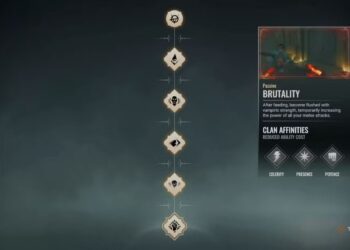Select Language:
Mages wield significant magical powers in Dragon Age: The Veilguard, drawing their abilities from the Fade. With extensive customization options, players can tailor their Mage Rook to fit different playstyles. While Mages may not begin with the same strength as Rogues or Warriors, their capabilities enhance as the game progresses, transforming them into formidable allies. They excel in both ranged and melee combat, offering a wealth of adaptability within their skill sets.
Within Dragon Age: The Veilguard, players can choose from three Mage Specializations, which become available at Level 20: Death Caller, Evoker, and Spellblade. Only one Specialization can be selected at a time. The variety of combinations allows players to craft unique builds for their Rook. However, opting for the Spellblade specialization often creates the best synergy within the party while minimizing overlap in damage types among companions.
Optimal Spellblade Build For a Mage Rook
Combining Fire and Lightning
The top Mage build in Dragon Age: The Veilguard revolves around the Spellblade specialization and harnesses fire and storm-based skills. This build typically focuses on close-quarters combat while utilizing tools like the Mage Knife and Orb, supplemented by ranged Area of Effect attacks to clear groups of enemies or trigger powerful combos with team members. Key Active Abilities in this setup include:
- Meteor
- Void Blade
- Chain Lightning
- Ultimate: Thunderous End
As key abilities like Void Blade and Thunderous End may take time to acquire, players can kick off their journey with Wall of Fire and the basic Destructive Light until they unlock their preferred Specialization.
In the early stages, players should prioritize the acquisition of Chain Lightning and Wall of Fire to maximize early-game effectiveness. Progressing through the Sustain segment of the Skill Tree will lead to acquiring Meteor, while moving through the Antivan Crow section unlocks Storm Surge, paving the way towards the Spellblade specialization point.
Investing in the Control area of the Skill Tree early on can also be beneficial, particularly for skill Frost Nova, which functions similarly to Cone of Cold from earlier Dragon Age entries. It allows Rook to freeze nearby foes, providing a chance to escape. Several passive skills in the Control section enhance available Mana, Staff Energy, and Health, which can prove vital if Rook feels underpowered initially.
Although the Mourn Watch section of the Skill Tree may be overlooked in this build, exploring a few nodes for the Channeled Thoughts Trait is advisable. This ability enables Rook to regenerate Mana while defending by tapping the Light Attack button, an asset during prolonged battles that deplete your Mana, allowing for repeated use of Void Blade in later stages. The nearby Degrade Greater Passive also offers value, increasing damage against enemies affected by a status condition or those primed for detonation combos.
In essence, regardless of class in Dragon Age: The Veilguard, acquiring all available Core skills, located centrally on the Skill Tree, is advisable for any build. For Mages, these skills include:
| Skill | Section | Type | Effect |
|---|---|---|---|
| Charging Spirit | Core | Greater Passive | Passively generates Staff Energy when out of combat. |
| Mind Blast | Core | Trait | While Defending, spend 50 Mana to release a Shockwave in all directions, dealing damage based on equipped Staff. |
| Quick Recovery | Core | Greater Passive | Mana Recovery restarts 25% faster when interrupted by spending Mana or taking damage. |
| Fade Strike | Core | Trait | Unleash a powerful attack with any weapon after using Fade Step, granting an extra follow-up attack during Sprinting, only for Orb attacks. |
| Downfall | Core | Greater Passive | Jump attacks guarantee Critical hits if the target is Knocked Down. |
| Mortal Concentration | Core | Trait | Maintaining your ranged attack gradually boosts its damage for up to three seconds. |
Most Traits, marked by hexagons in the Skill Tree, are very valuable as they enhance core Mage abilities like ranged attacks or Fade Step. It is wise to prioritize these as well.
Players should consider reshaping Rook’s skills at Level 20. At that point, they can specialize in Spellblade and pick up any remaining active skills required to complete this build.
Ideal Party Composition For a Mage Build
Creating Effective Combos with Allies
This particular Mage build works exceptionally well with Rogues like Harding and Lucanis in Dragon Age: The Veilguard. The ability Chain Lightning can trigger Lucanis’ Eviscerate, while both Meteor and Void Knife synergize with Harding’s Shred. Additionally, Davrin complements the team with his Battle Cry, which can draw enemies to him, allowing Rook, Harding, and Lucanis to freely launch ranged attacks without worrying about retaliation.
The Spellblade Specialization grants Rook unparalleled versatility among the group. Three Mage companions are Neve Gallus, Bellara Lutare, and Emmerich Volkarin. Bellara brings unique skills to the table, while Neve aligns more with the Evoker style, and Emmerich mirrors the Death Caller abilities. Consequently, Mage players favoring one of those two Specializations might find it less advantageous to bring Neve or Emmerich on missions, as overlapping damage types could hinder their effectiveness against enemies with specific resistances.
Alternative Effective Mage Builds
Infinite Combinations to Explore
There are various effective ways to construct a Mage Rook in Dragon Age: The Veilguard. Here are some notable build choices for each specialization:
- Evoker: Entropic Sphere, Chain Lightning, Dark Squall, Ultimate: Vortex of Shadow
- Spellblade: Void Blade, Wall of Fire, Tempest, Ultimate: Thunderous End
- Death Caller: Frost Nova, Corrupted Ground, Spirit Bomb, Ultimate: The Crypt’s Herald
During my initial playthrough of Dragon Age: The Veilguard, I opted for the Evoker specialization to align with my chosen faction of Shadow Dragons. This decision proved to be quite enjoyable, particularly when combining skills like Entropic Sphere with Taash’s Dragonfire Strike and Bellara’s Galvanized Tear. Ultimately, Dragon Age: The Veilguard‘s combat system invites players to explore and discover the builds that best suit their preferences, making it worthwhile to experiment and find what enhances your gameplay experience.








